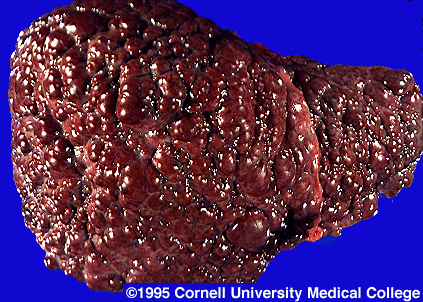Resident’s Name:Murphy Program: Lutheran Medical Center - Providence
Article title: Hepatitis B Virus Infection
Author(s): Cottone DMD, James. Raghunath Puttaiah, BDS, MPH
Journal: Dental Clinics of North America
Year. Volume (number). Page #’s: 1996. 40(2). 293-307
Major topic: HBV
Minor topic(s): Implications in dentistry
Main Purpose: Review HBV and its occurrence/incidence in the dental setting
Overview of method of research: Review
Findings: Hepatitis, or inflammation of the liver, is can be caused by many things, including viruses, certain diseases, and drug reactions. HBV is one of these viruses. When considering infection control protocols in the dental setting, HBV is the target disease. First described in 1965, HBV is a major cause of acute and chronic liver infection, cirrhosis, and primary hepatocellular carcinoma worldwide. The frequency of HBV varies workdwide, with 90% of the 300 million carriers being in underdeveloped countries (there are over 1,000,000 carriers in the US alone). Clinical signs and symptoms of acute HBV infection include some combination of anorexia, malaise, nausea, vomiting, abdominal pain, jaundice, skin rashes, athralgias, and arthritis. The incubation period of HBV is long…45-160 days. Sequelae to HBV infection could be asymptomatic, symptomatic carrier state, cirrhosis, acute hepatitis infection, primary liver cancer, or death.
HBV can be transmitted both percutaneously and non-percutaneously. Percutaneous transmission is from some kind of stick with a sharp instrument/needle. Non perc. Includes transfer of bodily secretions such as saliva, blood, and cervicular fluid. Transmission of HBV during dental dental treatment occurs primarily in the horizontal mode among staff and patients, mostly from patient to provider and less likely from provider to patient. The risk of HBV is more a factor of exposure to blood than to general patient contact. Intraorally the greatest concentration of HBV is at the gingival sulcus.
Thanks to awareness and immunization, the HBV carrier rate for dentists is only .4%. Dentists who are nonimmune are three times more likely to aquire HBV, and nonimmune specialists are at six times the risk. Oral surgeons have the highest carrier rate at 38.5%. Sorry Dr. Sam!! When compared with HIV, we are 57 times more likely to become infected with HBV.
Vaccines for HBV include a plasma derived vaccine and a recombinant DNA vaccine.
Key points/Summary: As always, proper infection control and universal precautions should always be used for every patient. It’s important that you educate your staff about HBV and other job hazards associated with dentistry. Making sure you and your staff are properly vaccinated, and are up to date with your vaccinations is paramount.
Assessment of Article: Good article….nice review of HBV and it’s implications for us. No shenanigans yo.


No comments:
Post a Comment